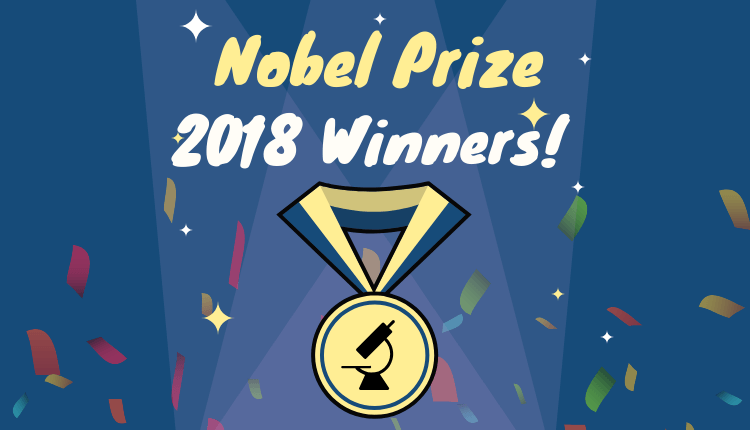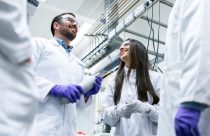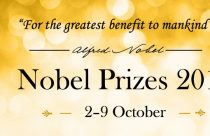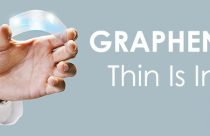The 2018 Nobel Prize Winners

The Nobel Prize was established by Alfred Nobel (October 21, 1833–December 10, 1896) a famous scientist, inventor, and businessman in his will dated November 27, 1895. His will stated that much of his fortune was to be used to give prizes to those who have done their best for humanity in the field of physics, chemistry, physiology or medicine, literature, and peace. The amount allotted to this cause was to be converted to safe securities by the executors of his will and the interest was to be distributed annually as prizes in the aforementioned categories. His will faced opposition from his family and authorities from various countries and it took its executors 4 years to resolve these issues.
In accordance with his will, the Nobel Foundation, a private institution was established in 1900. The first Nobel Prize for Physics, Chemistry, Physiology or Medicine, Literature, and the Peace Prize were awarded in the year 1901. In 1968, Sveriges Riksbank established The Sveriges Riksbank Prize in Economic Sciences in Memory of Alfred Nobel and the first prize was awarded in 1969.
As stated by the will, the prizes for physics and chemistry are awarded by the Royal Swedish Academy of Sciences; physiology or medicine by the Karolinska Institute in Stockholm; literature by the Swedish Academy in Stockholm; and peace by a committee of five persons selected by the Norwegian Storting. The Prize in Economic Sciences is also awarded by The Royal Swedish Academy of Sciences, Stockholm, Sweden.
The Awards Ceremony
The awards ceremony takes place on Alfred Nobel’s death anniversary, i.e. the 10th of December every year.
The Nobel Prizes in Physics, Chemistry, Physiology or Medicine and Literature are awarded in Stockholm, Sweden, while the Nobel Peace Prize is awarded in Oslo, Norway, according to Alfred Nobel’s will. The Sveriges Riksbank Prize in Economic Sciences in Memory of Alfred Nobel is also awarded at Stockholm, Sweden.
Each prize consists of a medal, a personal diploma, and a cash award. The cash award for 2018 has been set to 9 million SEK per prize category.
Schedule for the Announcement of the Nobel Prizes- 2018:
This year the Swedish Academy has decided to postpone the 2018 Nobel Prize in Literature, with the intention of awarding it in 2019. The announcement for the rest of the prizes are as follows:
The Nobel Prize in Physiology or Medicine: October 1, 2018, 11:30 a.m. at the earliest
The Nobel Prize in Physics: October 2, 2018, 11:45 a.m. at the earliest
The Nobel Prize in Chemistry: October 3, 2018, 11:45 a.m. at the earliest
The Nobel Peace Prize: October 5, 2018, 11:00 a.m.at the earliest
The Sveriges Riksbank Prize in Economic Sciences in Memory of Alfred Nobel: October 8, 2018, 11:45 a.m. at the earliest
Related Public Events Include:
- October 5, 2018- Nobel Prize teacher summit: Teach love and understanding , Stockholm, Sweden
- October 1–8, 2018-Nobel Calling 2018, Stockholm, Sweden
- December 8, 2018- Nobel Prize Concert featuring Lisa Batiashvili, Stockholm, Sweden
Top 10 Odd Facts about the Noble Prize
- The Nobel Prize nominees are kept classified for 50 years.
- Jean-Paul Sartre declined the Nobel Prize in Literature in the year 1964 because he had always declined official honors.
- Le Duc Tho declined the Noble Peace Prize in 1973. He cited the absence of actual peace in Vietnam as his reason for refusal.
- Three winners of the Nobel Peace Prize were in prison when they received the award: Carl von Ossietzky, a German pacifist and journalist in the year 1935, Aung San Suu Kyi, a Burmese politician in the year 1991, and Liu Xiaobo, a Chinese human rights activist in the year 2010.
- Leon Lederman, the winner of the Noble Prize in Physics in 1988, sold his Noble Prize for $765,000 in the year 2015 to cover his medical care expenses.
- Barry Marshall won the Noble Prize in Medicine in 2005, for his work on the discovery of the bacterium Helicobacter pylori and its role in gastritis and peptic ulcer disease. To prove that stomach ulcers were caused by bacteria and not stress, he drank a broth containing cultured H. pylori and developed stomach ulcers a few days later.
- Andre Geim, winner of the 2010 Noble Prize in Physics had also previously won the satirical Ig Nobel Prize in 2000. He is the only recipient of both the Ig Nobel and Nobel Prizes.
- Alisher Usmanov, a Russian billionaire paid $4.7 million and purchased the Nobel medal awarded to James Watson for his work on deciphering the DNA double helix. However, he returned the medal back to the laureate and asked for the money to be donated to research.
- When Niels Bohr won the 1922 Nobel Prize in Physics, Carlsberg brewery gifted him a house next to the brewery and connected a direct pipeline to it, so that Bohr could have free beer from the tap whenever he wanted.
- Werner Forssmann, a surgical intern who was forbidden from attempting the first ever heart catheterization on patients, was fired for performing it on himself. This work resulted in him winning a Nobel Prize for his contributions to Medicine 27 years later
You can test your knowledge about the Noble Prize by taking this quiz: https://www.nobelprize.org/
Winner of the Nobel Prize 2018
The Nobel Prize in Physiology or Medicine
This year the Nobel Prize in Physiology or Medicine has been awarded jointly to James P. Allison and Tasuku Honjo “for their discovery of cancer therapy by inhibition of negative immune regulation.”
The award-winning work is based on James Allison studying a protein that works as a break on the immune system and unleashes immune cells to attack tumors if the break could be released. Similarly, the joint winner Tasuku Honjo worked on another protein that worked as a break, but with a different mechanism. This form of therapy is revolutionary in our fight against cancer.
The Nobel Prize in Physics
This year the Nobel Prize in Physics has been awarded to Arthur Ashkin, Gérard Mourou, and Donna Strickland for “groundbreaking inventions in the field of laser physics.”
One half has been awarded to Arthur Ashkin for “the optical tweezers and their application to biological systems” and the other half jointly to Gérard Mourou and Donna Strickland for “ their method of generating high-intensity, ultra-short optical pulses.”
The award-winning work of Arthur Ashkin involved the invention of optical tweezers that are capable of grabbing particles, atoms, viruses and other living cells with their laser beam fingers. He successfully used laser light to push small particles towards the center of the beam and hold them there. His major breakthrough in the year 1987 was the use of these tweezers to capture bacteria without harming them. Optical tweezers are currently a popular tool to investigate the machinery of life.
Gérard Mourou and Donna Strickland were duly recognized for the creation of the shortest and most intense laser pulses till date. This work was published in the year 1985 and was the basis of Strickland’s doctoral thesis. The duo used an ingenious approach involving the stretching of laser pulses in time to reduce their peak power, amplify them and then finally compress them. This resulted in the creation of ultrashort high-intensity laser pulses without the loss of amplifying material. This invention, now referred to as “chirped pulse amplification” is now the standard for high-intensity lasers. This revolutionary technology finds extensive application in millions of corrective eye surgeries every year.
Donna Strickland is the first woman to win the Physics Nobel Prize in 55 years and only the third woman to win the award in this category; the other two being Marie Curie (1903) and Maria Goeppoert-Mayer (1963).
The Nobel Prize in Chemistry
This year, the Nobel Prize in Chemistry has been awarded to Frances H. Arnold, George P. Smith, and Sir Gregory P. Winter. One half has been awarded to Frances H. Arnold for the “directed evolution of enzymes” and the other half jointly to George P. Smith and Sir Gregory P. Winter “for the phage display of peptides and antibodies.”
Frances H. Arnold’s award-winning work in the year 1993, involved the first directed evolution of enzymes—proteins capable of catalyzing chemical reactions. She has improvised on this methodology since then and currently, it is used to develop new enzymes on a fairly regular basis. The enzymes developed by her are used to manufacture pharmaceutical compounds and biofuels in an environmentally friendly process.
George P. Smith’s and Sir Gregory P. Winter’s work involved the development of a method known as phage display, wherein a bacteriophage (a virus that can infect bacteria) is used for the directed evolution of new proteins. Gregory Winter used this methodology to direct the evolution of antibodies for the production of pharmaceuticals. “Adalimumab,” a drug used for the treatment of rheumatoid arthritis, psoriasis, and inflammatory bowel diseases was the first antibody to be produced using this methodology. It received approval in the year 2002. This was followed by the production of antibodies that can neutralize toxins, counteract autoimmune diseases, and cure metastatic cancer.
The Nobel Peace Prize
This year, the Nobel Peace Prize has been awarded to Denis Mukwege and Nadia Murad for “their efforts to end the use of sexual violence as a weapon of war and armed conflict.”
Denis Mukwege, a physician, has devoted his life to helping victims of sexual violence. He has spent a good amount of his adult life in helping victims of sexual violence in the Democratic Republic of Congo. He established the Panzi Hospital in Bukavu in 2008 with the support of several organizations, and since then he and his staff have treated thousands of individuals who have suffered sexual violence. He has repeatedly condemned impunity for mass rape. He has criticized the Congolese and other governments for their inability to stop the use of sexual violence against women.
Nadia Murad is a victim of war crimes. She is a member of the Yazidi minority in northern Iraq. As part of an attack against her community, she was abducted by militants of the Islamic State (IS) in August 2014. The IS massacred several hundred people and subjected around 3,000 girls and young woman to rape and other abuses. Nadia managed to flee after a three-month nightmare and refused to be ashamed or remain silent about the abuses she was subjected to. She openly spoke about the abuses she and thousands of others like her suffered at the hands of the IS. She was named as the UN’s first Goodwill Ambassador for the Dignity of Survivors of Human Trafficking in the year 2016.
Denis Mukwege and Nadia Murad have both risked their personal security in their efforts to courageously combat war crimes and seek justice for victims.
The Nobel Prize in Economic Sciences
This year, the Nobel Prize in Economic Sciences in memory of Alfred Nobel has been awarded jointly to William D. Nordhaus for “integrating climate change into long-run macroeconomic analysis” and Paul M. Romer for “integrating technological innovations into long-run macroeconomic analysis.”
Nordhaus’ award-winning findings involved studying the interactions between society and nature. He started this work in the 1970s because of the increasing worry among scientists about global warming due to the combustion of fossil fuel. He was the first person in the mid-1990s to create an integrated assessment model. This model described the global interplay between climate and economy. His model integrated theories as well as empirical results from physics, chemistry, and economics. This model is now widely recognized and used to simulate the co-evolution of the economy and climate. Its uses involve examination of the consequences of climate policy interventions such as carbon taxes.
Romer, on the other hand, demonstrated how knowledge can function as a driver of long-term economic growth. His award-winning work demonstrated how the willingness of firms to produce new ideas and innovations is governed by economic forces. His work, which was published in 1990, laid the foundation of the “endogenous growth theory.” His theory is conceptual as well as practical, because of its explanation of how ideas are different than other goods and require specific conditions to thrive in markets. Romer’s theory has led the way for vast amounts of new research dealing with the regulations and policies that encourage new ideas as well as long-term prosperity.
The Royal Swedish Academy of Sciences said that “Their findings have significantly broadened the scope of economic analysis by constructing models that explain how the market economy interacts with nature and knowledge.”
References:
- Alfred Nobel’s will. NobelPrize.org. Nobel Media AB 2018. Fri. 28 Sep 2018. https://www.nobelprize.org/alfred-nobel/alfred-nobels-will-2/
- Alfred Nobel’s life. NobelPrize.org. Nobel Media AB 2018. Fri. 28 Sep 2018. https://www.nobelprize.org/alfred-nobel/biographical-information/
- Alfred Nobel’s will. NobelPrize.org. Nobel Media AB 2018. Fri. 28 Sep 2018. https://www.nobelprize.org/alfred-nobel/alfred-nobels-will-2/
- Nobel Prize facts. NobelPrize.org. Nobel Media AB 2018. Mon. 1 Oct 2018. https://www.nobelprize.org/prizes/facts/nobel-prize-facts/
- https://www.scientificamerican.com/article/12-surprising-facts-about-nobel-prizes/
- https://www.kickassfacts.com/20-interesting-facts-about-nobel-prize-laureates/
- The Nobel Prize in Physiology or Medicine 2018. NobelPrize.org. Nobel Media AB 2018. Mon. 1 Oct 2018. https://www.nobelprize.org/prizes/medicine/2018/summary/
- Press release. NobelPrize.org. Nobel Media AB 2018. Mon. 1 Oct 2018. https://www.nobelprize.org/prizes/medicine/2018/press-release/
- The Nobel Prize in Physics 2018. NobelPrize.org. Nobel Media AB 2018. Wed. 3 Oct 2018. https://www.nobelprize.org/prizes/physics/2018/summary/
- Press release. NobelPrize.org. Nobel Media AB 2018. Wed. 3 Oct 2018. https://www.nobelprize.org/prizes/physics/2018/press-release/
- The Nobel Prize in Chemistry 2018. NobelPrize.org. Nobel Media AB 2018. Wed. 3 Oct 2018. https://www.nobelprize.org/prizes/chemistry/2018/press-release/
- The Nobel Peace Prize for 2018. NobelPrize.org. Nobel Media AB 2018. Fri. 5 Oct 2018. https://www.nobelprize.org/prizes/peace/2018/press-release/
- The Prize in Economic Sciences 2018. NobelPrize.org. Nobel Media AB 2018. Mon. 8 Oct 2018. https://www.nobelprize.org/prizes/economics/2018/summary/
- https://www.nobelprize.org/uploads/2018/10/press-economicsciences2018.pdf










it good to work in collaboration with others